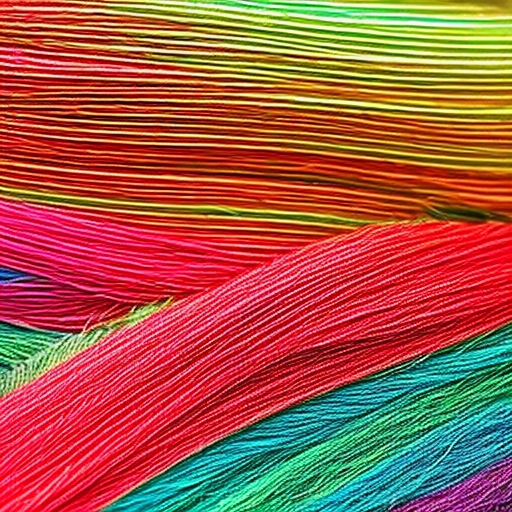
Introduction
When it comes to sewing, one of the most crucial components is the sewing thread. Sewing thread is a thin strand of yarn made from various materials, typically used to stitch fabric together. It plays a vital role in securing seams, creating decorative stitches, and providing overall strength to the finished garment or textile product.
Types of Sewing Thread
There are several types of sewing threads available, each designed for specific purposes:
- Cotton thread: This traditional thread is made from natural cotton fibers and is widely used for general sewing. It is known for its durability, versatility, and ability to withstand high heat without breaking or damaging the fabric.
- Polyester thread: Polyester thread is known for its strength and resistance to stretching and shrinking. It is a popular choice for sewing synthetic and blended fabrics, as well as heavy-duty projects requiring extra durability.
- Nylon thread: Nylon threads are incredibly strong and have excellent elasticity. They are often used for stitching heavy fabrics, upholstery, leather goods, and outdoor gear.
- Rayon thread: Rayon threads have a silk-like sheen and are frequently used for decorative purposes, such as embroidery and topstitching. They lend a luxurious touch to garments and are available in a wide range of colors.
- Metallic thread: Metallic threads are coated with a thin layer of metallic material to give a brilliant and shimmering effect. These threads are commonly used for decorative sewing, embroidery, and embellishment.
Choosing the Right Sewing Thread
When selecting a sewing thread, consider the following factors:
- Fabric type: Different fabrics require different threads. For example, lightweight fabrics typically need a finer thread to avoid overpowering the fabric, while heavy-duty fabrics demand a stronger thread for added durability.
- Needle size: The thickness of your thread should match the size of your needle. A thick thread on a small needle may cause damage to the fabric, whereas a thin thread on a large needle might result in loose stitches.
- Sewing application: Choose a thread that suits the specific purpose of your sewing project. If you’re creating decorative stitches or undertaking embroidery work, opt for threads with special finishes, such as metallic or rayon.
Conclusion
Essential to any sewing project, the sewing thread ensures the longevity and strength of the finished textile product. With various types available, picking the right thread to match your fabric, needle, and desired sewing outcome is vital. Whether you choose cotton, polyester, nylon, or specialty threads, investing in quality thread will contribute to the success of your sewing endeavors.





Amazing! #SewingProjects
Lexi Johnson: Every sewer needs this! #SewingEssentials #Thread
This essential thread is great for all kinds of sewing projects – the perfect addition to any sewist’s supplies! #SewingEssentials #Thread
Such a versatile product – no matter the project, you can rely on this thread! #SewingProjects #Thread
Perfect for so many tasks, this thread is a must-have for any avid seamstress! #SewingProjects #SewingEssentials #Thread
Essential for all kinds of garment fabrics – you’ll love this thread! #Fabric #SewingEssentials
Perfect for anything from quilt patches to clothing – a must-have for any sewer! #SewingProjects #SewingEssentials #Thread
Absolutely necessary for any DIYer – add this thread to your sewing kit today! #SewingProjects #SewingEssentials #Thread